Randy, our host, has a masters degree in aquaculture. One of the projects he has started in Thailand is a tilapia farm. There are several benefits to the farm: it employs about 30 Thais; they sell eggs to locals who raise fish for food and income; the profits from farm support other ministries in Thailand.
We arrived at the end of a weekly worship service they hold for the employees.
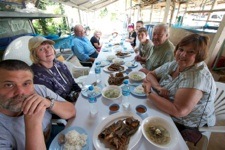
Then we had lunch, which was hamburgers--just kidding, it was of course tilapia. There was also rice and a cabbage pork soup. The tilapia was very good as evidenced by the

remnants of the tilapia I consumed.
After lunch, Randy gave us a tour of the farm. I'll try
to explain how it works as best as I can.
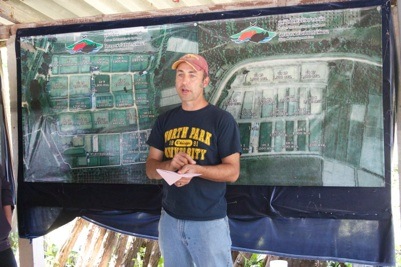
Tilapia mothers keep their eggs in their mouths. The mothers have a new batch of eggs about every month. The mothers are kept in
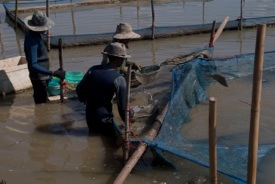
special ponds (120 of them) where the fish are checked for eggs every 7 days. They use nets to bring all the fist to the corner of the pond and then check them individually. They net them, check their mouths, and if there are no eggs they toss them back into the pond. If you look closely in the picture above, you can see a fish in midair on her way back to the pond.
If they have eggs (like the fist in the title picture), they backwash
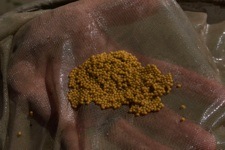
water through the gills and wash the eggs into a net. They get about 1,000-1,200 eggs per fish. The reason they take the eggs out instead of letting them hatch naturally is so they can get the mothers to breed more often. Otherwise the mothers have to hatch the eggs, and then rest a while before they breed again.
When the eggs are in the net, one of the workers examines them and divides them into 5 stages of maturity. They are treated differently in the hatching area. The eggs (about 10,000) are put into
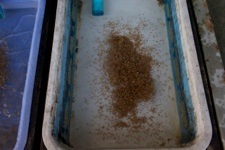
trays where they are kept in motion with water. Because they are still eggs, there is no requirement to feed them until they have completely used the nutrition in the egg. Once the egg is used up, they are fed 5 times a day.
When they are big enough, the eggs are put into ponds where they grow to be about an inch long. Because the farmers don't want their fish to breed, they add testosterone to the food forcing them all to be males. At this point, they are sold to local farmers who grow them to eating size. They also sell fingerling fish to farmers who grow them in cages. The smaller fish would escape from the cages.
The optimal water temperature for the water is 86 degrees. In the hot season,
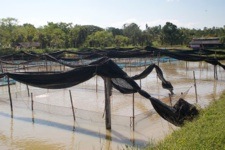
the water gets to the low 90s and the productivity of the ponds drops dramatically and therefore their income. By covering the ponds in the hot season, they improved the productivity so that one covered pond in the hot season produced as many fish as the entire rest of the farm.
Some statistics from the farm. About 10 million eggs go through the hatchery every month. Each breeding pond generates about 30,000 eggs/month. The small fish sell for 0.6 Baht per fish (or $.02). The count out 2,000 fish, weigh them, and use that weight to count the fish.
Randy hopes to add fish food factory to the farm. That way they could generate their own food saving some money and sell food to some of the local farmers.
I found the farm and its operation to be fascinating.

